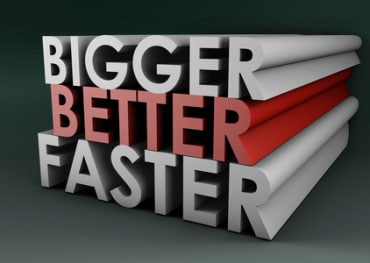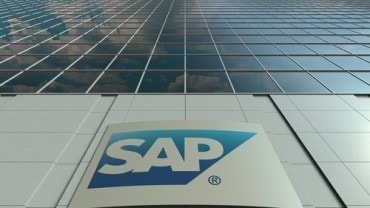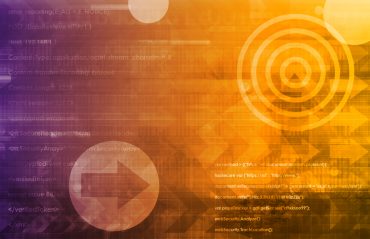
Business and IT operations are becoming increasingly automated, which makes modernizing your applications a vital part of advancing your organization.
Ralph Waldo Emerson famously said, “What we fear doing most is usually what we most need to do.” The pandemic prompted organizations to realize that they need an agile, scalable IT environment in order to meet the ever-growing needs of their customers. A monolithic architecture that these businesses run on further muddled the fulfillment of this need. Enter application modernization which is a viable solution to refactor, re-purpose or consolidate legacy applications in order to align them more closely to current business needs. Because application modernization offers so many benefits, it is imperative that you modernize your monolithic application as soon as possible.
What is application modernization?
Application modernization is the process of updating older software for newer computing technologies. This involves updating older languages, frameworks, infrastructure platforms, and more. For example, we can compare this update to renovating an older home to make it safer, more functional, easier to use, and more appealing in terms of its design, etc. We call this process legacy modernization.
Modernizing legacy applications extend their lifespan rather than replacing them entirely. By taking this approach, your business can take advantage of technological advancements.
Most companies have made thoughtful investments in their existing application portfolios. But it may be time to retire these outdated applications and replace them with the latest versions. However, this can be costly from a financial and operational perspective. As a result, application modernization is the most sensible way to make use of newer platforms, tools, and frameworks.
See also: Application Modernization and Change Data Capture
Why is it important for today’s era?
For the past few years, digital transformation has become a hot-button issue. During the pandemic, however, its use escalated as more companies realized they had to be digitally present to serve the needs of their digitally-conscious customers when they were geographically separated.
Organizations seeking digital transformation faced major challenges due to the monolithic architecture that legacy applications ran on. These apps still ran on outdated technologies in a world where business applications were thriving in Low-Code/No-Code environments. The newer applications used microservices and APIs to communicate with each other, but legacy applications still required full development teams for even the slightest third-party integration. Businesses simply had to upgrade. Application Modernization provided the solution.
Why do businesses need application modernization services?
Applications modernization services include the migration of legacy applications or platforms to new ones, including the integration of new features to keep up with the latest business requirements. Options for modernization include re-platforming, re-hosting, re-coding, rearchitecting, re-engineering, interoperability, replacement, and retirement, as well as redefining the application architecture to clarify which option should be selected. Some reasons why you should consider application modernization services:
- Cost-Reduction: By reducing capital expenses, you can replace them with a more manageable and scalable operating expense.
- Employee Productivity: Modernized applications provide your employees with fewer application incidents, enhanced team utilization, as well as new features and functionality.
- Customer Experience: Just like with your employees, modernized apps help improve customer experience by enabling new services and processes with a more intuitive user interface.
- Improve Revenue Streams: Upgrading your system allows you to provide new services and processes to customers that add value and generate new revenue.
Types of enterprise application modernization
- Rationalize your application portfolio – determine which applications you should upgrade, retire, or move to the cloud.
- Migrate your apps to the best cloud platform – After evaluating your portfolio, migrate your cloud-ready apps.
- Improve existing non-cloud-ready applications – non-cloud-ready apps can still be accessed and used in the cloud.
- Design new cloud-native applications – Create scalable, agile, and resource-efficient cloud-native apps.
- Manage and develop applications using AI and automation – No matter whether they are in the cloud or not, AI can help you make your applications more reliable.
What are the important tools?
Microservices
The term ‘microservices’ refers to a type of service-oriented architecture (SOA). Your application is composed of loosely coupled services rather than monolithic programs. This significantly improves the overall agility and maintainability of your application.
The whole idea behind microservices is taking a large monolithic application and breaking it up into smaller apps that are easy to change, adapt, and re-deploy.
Containers
Containers are ways of separating the applications from the underlying environments in which they run. This allows you to switch between different platforms effortlessly.
It ensures that container-based applications can be deployed easily and consistently, regardless of whether they are deployed in a private data center, the public cloud, or on a developer’s laptop.
IT operations teams can focus on deployment and management thanks to containerization, which allows developers to focus on their application logic and dependencies.
Serverless
Using serverless technology, you are able to shift your operational responsibilities to the cloud without depending on a server, increasing your agility and innovation. With this approach, you can build and run applications and services without having to manage infrastructure such as provisioning servers and clusters, patching, maintaining operating systems, and providing capacity.
Serverless architectures allow developers to focus on their core products rather than managing and operating servers. Developers can save time and energy when working in the cloud or on-premises with this reduction in overhead.
What’s the best method to modernize applications for your business?
- Add APIs to extend legacy systems: Adding APIs to on-premises systems can connect them to other modern applications and preserve your existing investments. No application updates or customizations are required.
- Adopt new software-as-a-service (SaaS) applications to replace legacy systems: Investing in new best-of-breed applications can help you unlock data and processes. Be sure to use APIs to integrate these new applications with your existing business processes and applications.
- Build new applications using microservices: Developing applications using microservices-based application architecture is the goal of many leading organizations. Because of their modularity and scalability, they easily integrate with existing applications, data sources, and business processes to help drive digital transformation.
Conclusion
Businesses need to start seeking education on leaving legacy applications behind so that they can advance into the future. Application modernization is a complicated yet necessary step required to help you optimize your business. Business and IT operations are becoming increasingly automated, which makes modernizing your applications a vital part of advancing your organization.





























